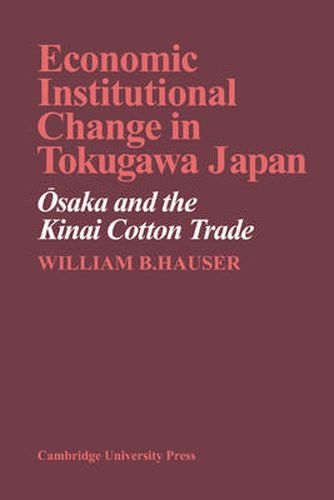Readings Newsletter
Become a Readings Member to make your shopping experience even easier.
Sign in or sign up for free!
You’re not far away from qualifying for FREE standard shipping within Australia
You’ve qualified for FREE standard shipping within Australia
The cart is loading…






Originally published in 1974, this volume deals with economic and social change in eighteenth- and early nineteenth-century Japan, by means of a case study of the cotton trade in Osaka and the surrounding Kinai region. The development of the Osaka cotton trade is studied to illustrate the growth of new kinds of commercial institutions to regularize trading patterns and the changing interaction between merchant groups and the Tokugawa bakufu. A picture is presented of the changing interaction between urban and rural merchants and the ability of cotton cultivating villages to organize and contest urban merchant and governmental attempts to limit their commercial activities. The result is a revised interpretation of the effective coercive powers of the Tokugawa bakufu with respect to socio-economic change. Evidence is offered to illustrate the ability of urban and rural traders to assert their own interests in opposition to Tokugawa efforts at economic controls.
$9.00 standard shipping within Australia
FREE standard shipping within Australia for orders over $100.00
Express & International shipping calculated at checkout
Originally published in 1974, this volume deals with economic and social change in eighteenth- and early nineteenth-century Japan, by means of a case study of the cotton trade in Osaka and the surrounding Kinai region. The development of the Osaka cotton trade is studied to illustrate the growth of new kinds of commercial institutions to regularize trading patterns and the changing interaction between merchant groups and the Tokugawa bakufu. A picture is presented of the changing interaction between urban and rural merchants and the ability of cotton cultivating villages to organize and contest urban merchant and governmental attempts to limit their commercial activities. The result is a revised interpretation of the effective coercive powers of the Tokugawa bakufu with respect to socio-economic change. Evidence is offered to illustrate the ability of urban and rural traders to assert their own interests in opposition to Tokugawa efforts at economic controls.